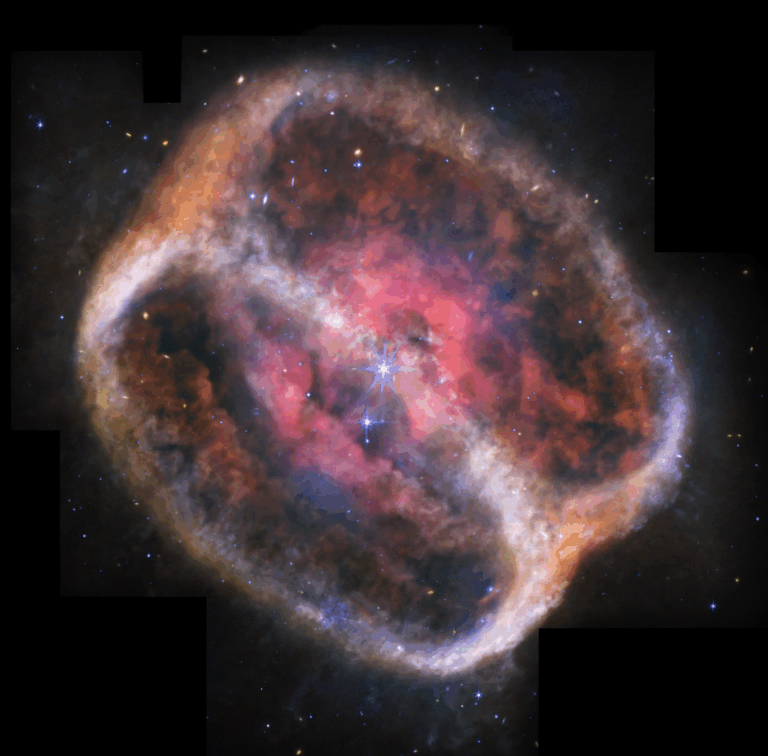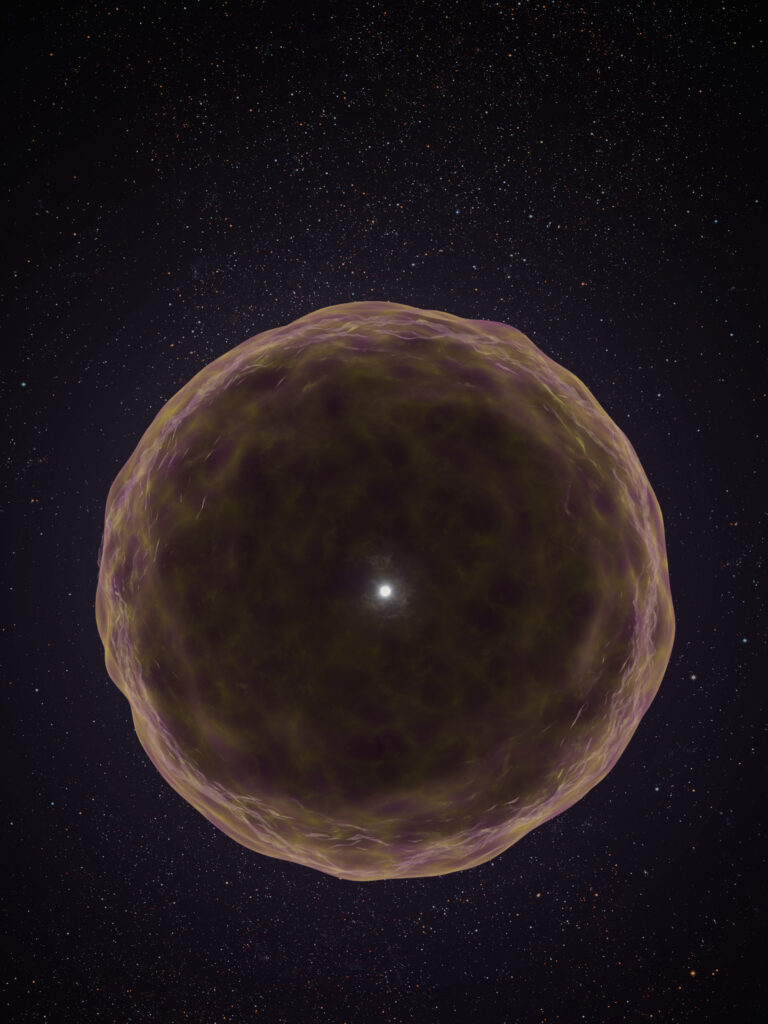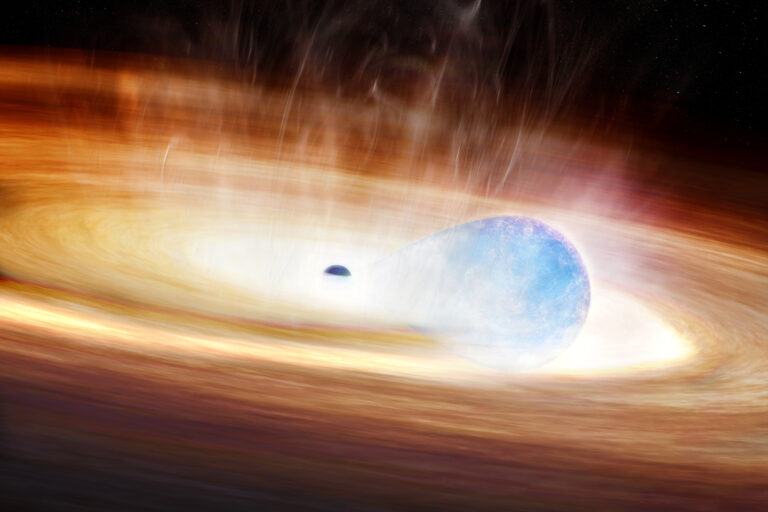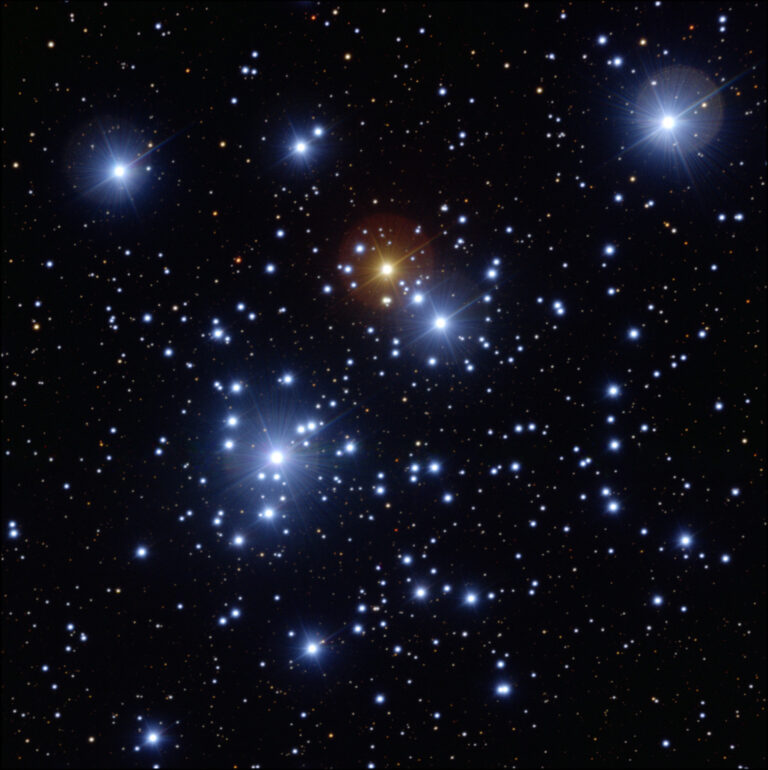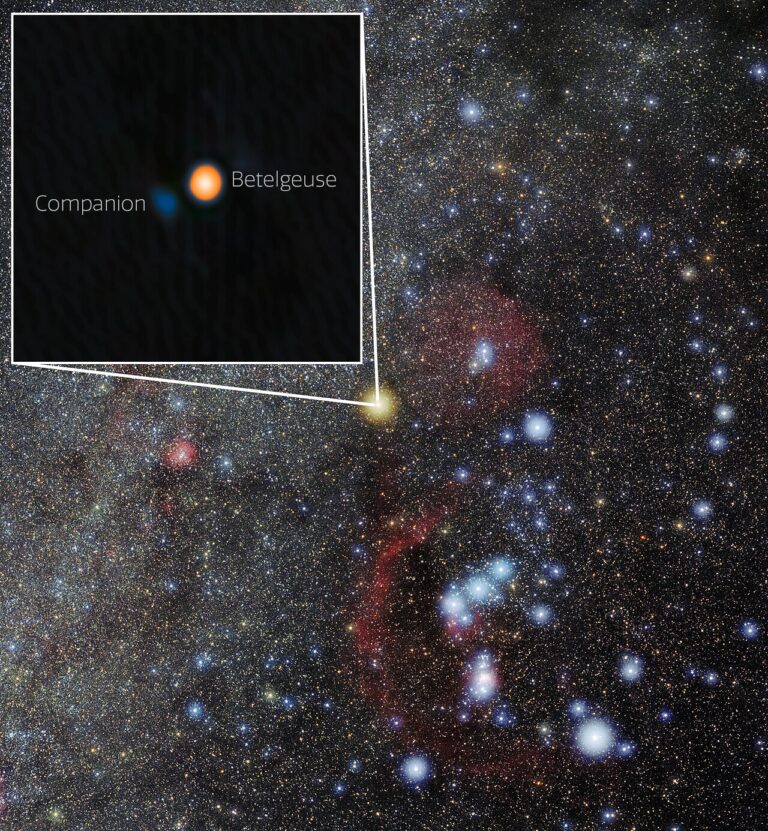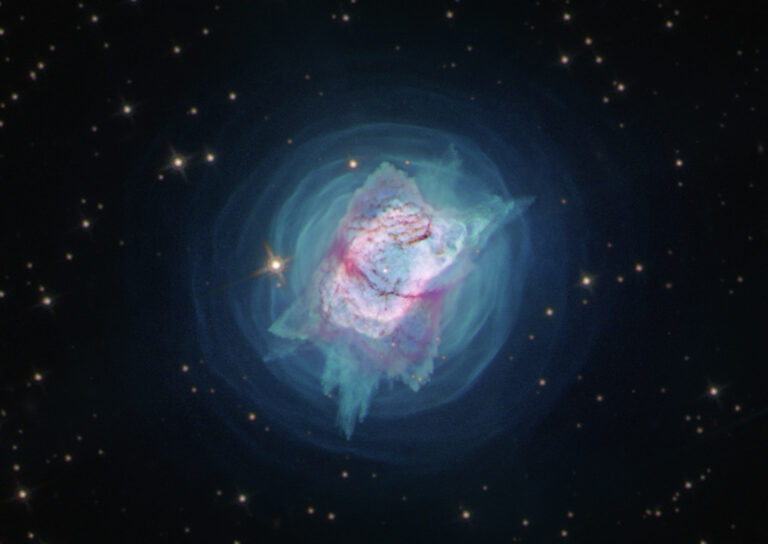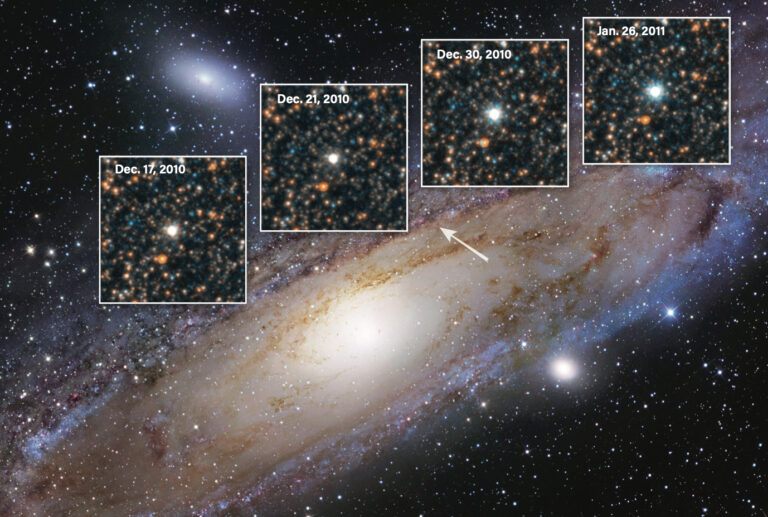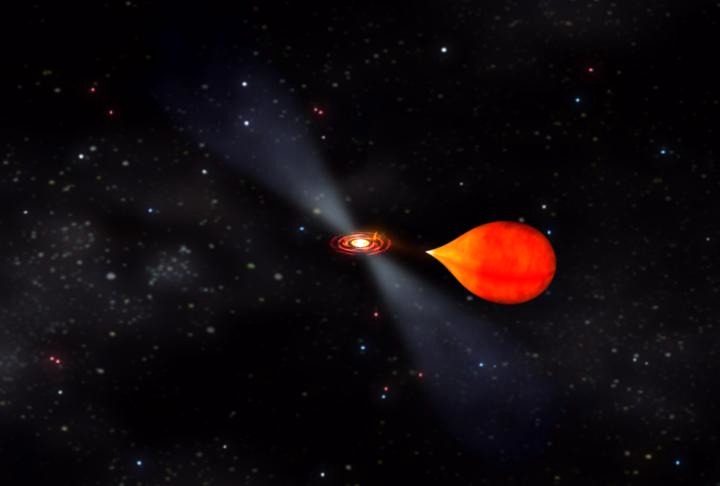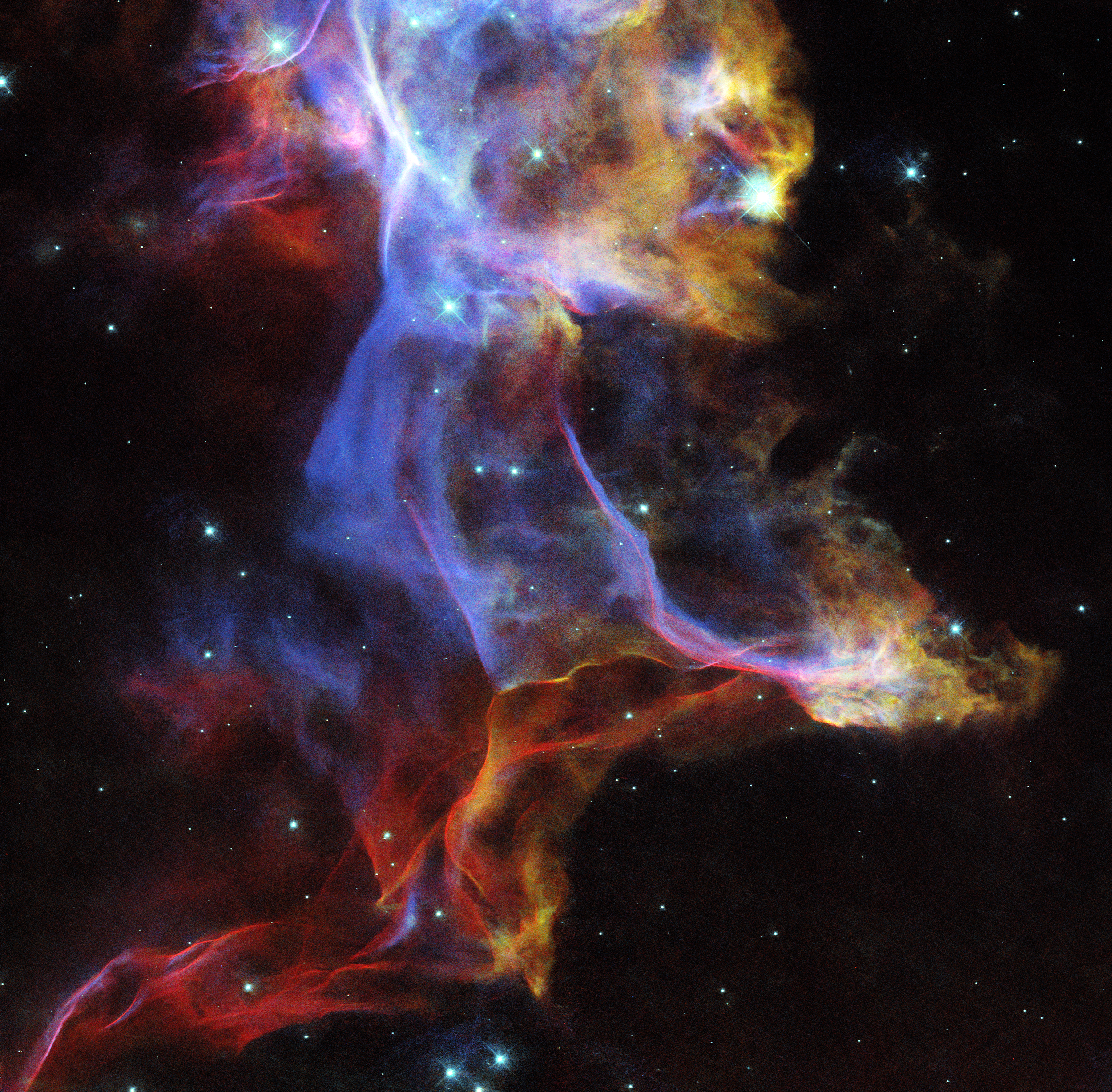
Key Takeaways:
- A supernova explosion, from a massive star, occurred roughly 2,400 years ago.
- Its light reached Earth around 10,000 years ago, appearing brighter than Venus.
- The explosion's remnants are now visible as the Veil Nebula.
- The Hubble Space Telescope captured a detailed image of a portion of the Veil Nebula.
About 10,000 years ago, a new star appeared in what we now recognize as Cygnus the Swan. It was the light from a supernova explosion that occurred about 2,400 years earlier, when a star with roughly 20 times the Sun’s mass had exhausted its nuclear fuel. This caused the core to collapse, triggering a shock wave that tore the rest of the star apart. When the light reached Earth, it shone brighter than Venus and would have been visible during the day; today astronomers see the tattered remains of the star as the Veil Nebula, a glowing cloud of gas that spans 3°, six times the Full Moon’s diameter.
The Hubble Space Telescope captured this tiny section of the Veil located near the nebula’s southeastern edge. The image combines light emitted by hydrogen, sulfur, and oxygen atoms.

